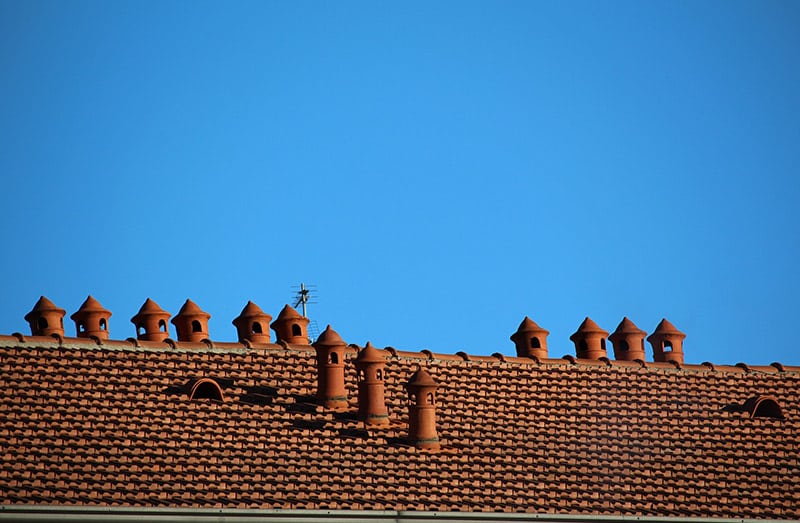
The chimney crown, often regarded as a chimney’s first line of defense against the elements, plays a crucial role in maintaining the structural integrity and functionality of a chimney. However, when this protective barrier becomes compromised, as in the case of a cracked chimney crown, it can lead to significant issues for both the chimney and the overall safety of a home. In this article, we delve into the importance of a chimney crown, the causes and signs of a cracked chimney crown, and the necessary steps to address this issue.
The Significance of a Chimney Crown
The chimney crown is a vital component of a chimney structure, serving to protect the chimney from water infiltration and damage caused by the weather. Placed at the top of the chimney, it acts as a shield against rain, snow, ice, and debris. Additionally, it prevents water from seeping into the chimney and causing damage to the masonry, flue liner, and other internal components.
Beyond protection, a well-constructed chimney crown also aids in directing water away from the chimney’s sides, reducing the risk of erosion and extending the life of the chimney. Its slightly sloped design allows water to flow away from the flue, keeping the chimney dry and minimizing the potential for water-related damage.
Identifying a Cracked Chimney Crown
A cracked chimney crown can compromise the chimney’s ability to shield against moisture, potentially leading to more extensive damage. Recognizing the signs of a cracked chimney crown is crucial for timely intervention and prevention of further issues. Here are some common signs:
1. Visible Cracks:
The most obvious sign of a cracked chimney crown is visible cracks on the surface. These cracks can vary in size and may start small but can widen over time, especially if left unaddressed.
2. Water Leakage:
If you notice water entering your chimney or signs of water damage on the ceiling near the chimney, it could be due to a cracked chimney crown allowing water to penetrate.
3. Deterioration:
The chimney crown may show signs of deterioration, such as chipping or pieces breaking off. This is a clear indicator that the crown is compromised and in need of repair or replacement.
4. Efflorescence:
Efflorescence, the white, powdery substance on the chimney’s surface, often indicates moisture infiltration. If you notice efflorescence on the chimney crown, it could be due to water getting through cracks.
Causes of a Cracked Chimney Crown
Understanding the potential causes of a cracked chimney crown can help homeowners take preventive measures to avoid this issue. Some common causes include:
1. Freeze-Thaw Cycle:
In colder climates, water that penetrates the crown can freeze and expand, leading to cracks over time as this freeze-thaw cycle continues.
2. Poor Construction:
Chimney crowns that were poorly designed or constructed using subpar materials are more likely to develop cracks and deteriorate.
3. Age and Wear:
Over time, exposure to the elements and general wear and tear can cause the chimney crown to weaken and eventually crack.
4. Improper Slope:
If the chimney crown does not have a proper slope to direct water away, it can lead to pooling, erosion, and cracks.
Addressing a Cracked Chimney Crown
Repairing or replacing a cracked chimney crown is crucial to prevent further damage to the chimney and maintain the integrity of the structure. Depending on the severity of the cracks and the overall condition of the chimney, there are several repair options:
1. Patch and Seal:
Small cracks can often be patched and sealed using specialized chimney crown repair products. This process involves filling the cracks and applying a sealant to prevent further water infiltration.
2. Crown Rebuilding:
In cases where the cracks are extensive and the crown is significantly deteriorated, a complete crown rebuilding might be necessary. This involves removing the damaged crown and constructing a new one using appropriate materials and techniques.
3. Proper Maintenance:
Regular chimney inspections and maintenance are essential to detect early signs of crown damage and address them promptly. Preventive measures, such as waterproofing the crown, can also extend its lifespan and protect against future cracks.
Conclusion
A cracked chimney crown is a potential hazard that should not be ignored. Recognizing the signs, understanding the causes, and taking appropriate measures to repair or replace a damaged crown are essential steps in maintaining a safe and functional chimney. Regular maintenance and timely repairs can go a long way in preserving the integrity of the chimney and ensuring the safety and well-being of your home.
